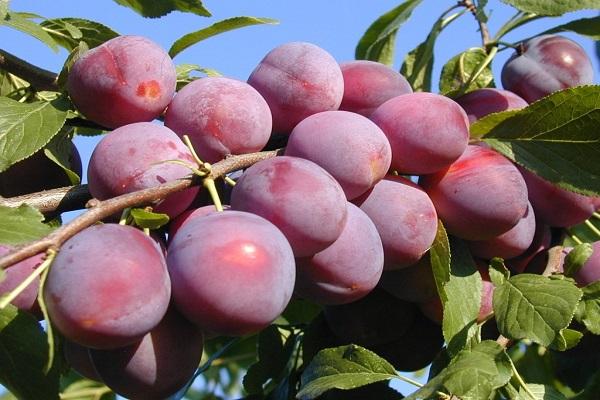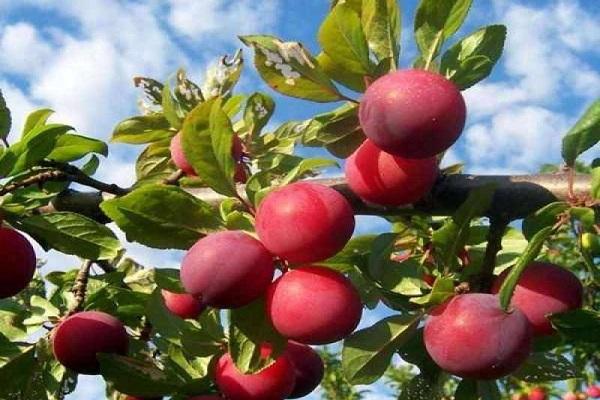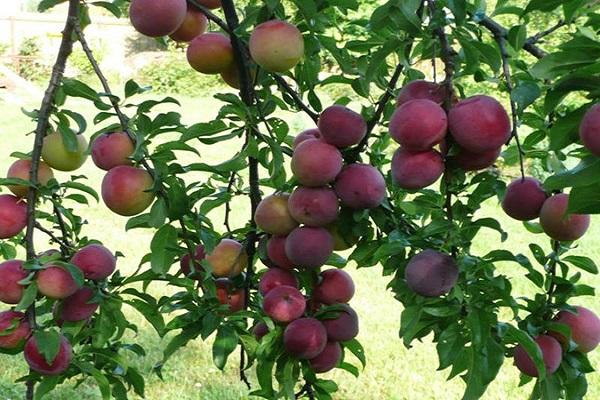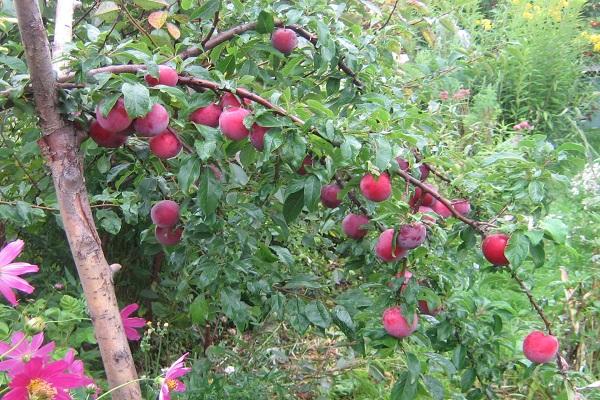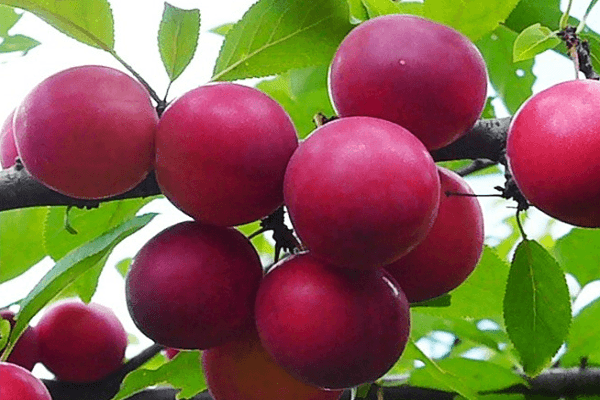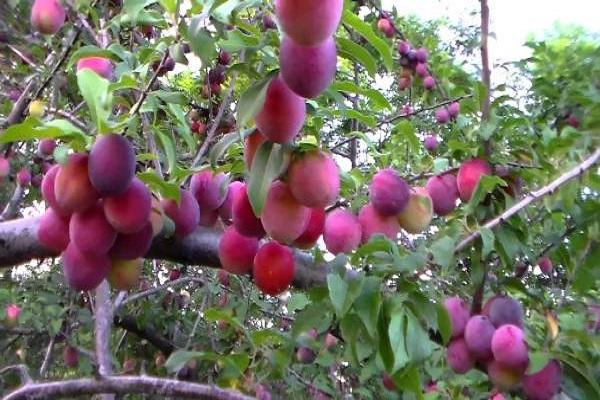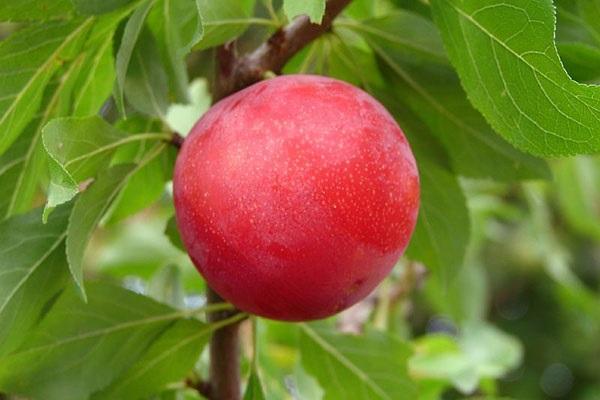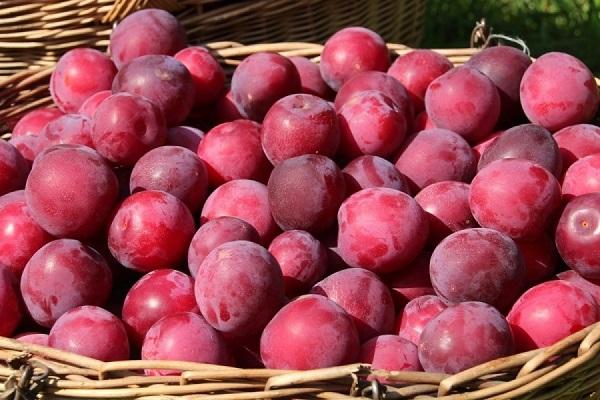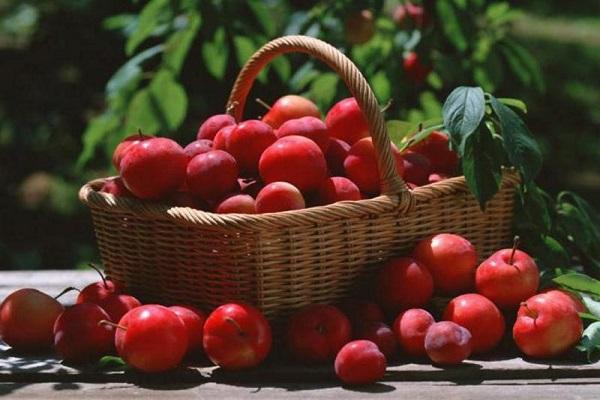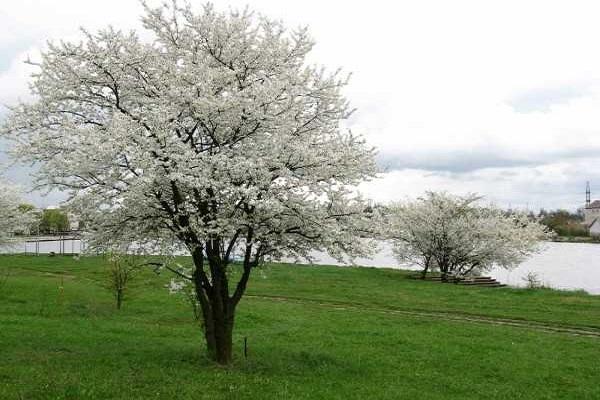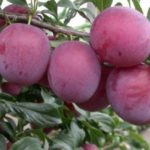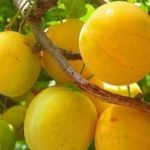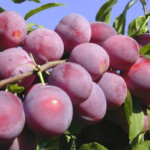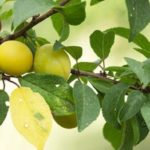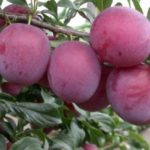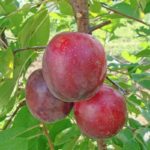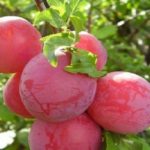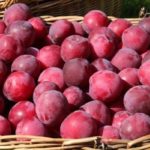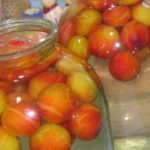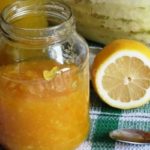There are many varieties of cherry plum, but not all of them are in demand among gardeners. This fruit is popular for growing for sale or for storing for the winter. There are varieties that can be easily bred by a novice summer resident. These include the Traveler cherry plum.
- Breeding history
- Description
- Characteristics of the variety
- Resistance to drought and frost
- Variety resistance to diseases and pests
- Pollinators and flowering
- Productivity and fruiting
- Where are fruits used?
- Advantages and disadvantages
- How to plant a variety in the garden
- Disembarkation dates and place
- Desirable and Undesirable Neighbors
- Preparing the planting hole
- Selection and preparation of seedlings
- Technological process of planting
- Tree care
- Watering
- Fertilizing schedule, table
- Tree trunk care, mulching
- Spring and autumn pruning
- Preventative treatments of the variety
- Feedback from gardeners
This is one of the subspecies that produces abundant harvests on an ongoing basis. The plant is resistant to diseases and pests and is easy to care for. The fruits ripen early, which allows you to enjoy juicy fruits already in mid-summer. To successfully plant a tree, it is important to become familiar with its characteristics, growing procedure and care.
Breeding history
The cherry plum variety Traveler was created by researchers G. Eremin and L. Velenchuk in an experimental floriculture laboratory in 1977. The variety was bred through the symbiosis of Tauride cherry plum and Chinese Berbank plum. The fruit crop is intended for cultivation in the middle zone. In 1986, cherry plum was included in the State Register.
Description
The cherry plum variety is a hybrid species of Russian plum. The trees grow quickly, up to 3 meters high. The crown is moderately dense, shaped like a wide oval. The trunk has smooth, gray bark. The branches are straight, thick, have long spears that live for a short time.
- The inflorescences are large in size, formed in pairs. Flowering occurs in mid-April.
- The fruit grows weighing 28 grams, round in shape, with a noticeable seam on the side. The skin is of moderate density, difficult to separate from the orange pulp with thin fibers.
- Cherry plum of the Traveler variety is found in a yellow-violet hue, with many dots.
- The sugar content is low, 7.6%, moderate acidity – 2.5%.
- The variety received a tasting score of 4.2 points, 100 grams contain 34 kcal.
- The plant does not pollinate on its own.
The variety is suitable for cultivation for personal consumption or sale.
Characteristics of the variety
Cherry plum Traveler has the following garden characteristics:
- high frost resistance;
- average immunity to disease;
- average resistance to drought;
- the root collar is capable of supporting under undesirable growing conditions.
A tree of this variety brings a lot of harvest, which is its main feature.
Resistance to drought and frost
Cherry plum courageously resists frost, withstands low temperatures down to -30. Frosts can cause harm only during the period of bud formation. A sharp drop in temperature causes the flowers to fall off. The hybrid variety does not like drought, but also reacts poorly to high soil moisture. Insufficient water supply is fraught with partial shedding of leaves and ovaries. Water stagnation leads to rotting of the root system.
Variety resistance to diseases and pests
Cherry plum Traveler has a strong immunity to diseases. If the weather conditions are bad, it rains constantly and it is hot, the tree may be attacked by fungi. Summer residents note the high resistance of the variety to pests with proper preventive treatment.
Pollinators and flowering
Cherry plums should be pollinated in order to obtain a bountiful harvest on an ongoing basis. It is worth planting other varieties on the plot. The best cross-pollinators are varieties of Russian, Skoroplodnaya and Chinese plums.
Productivity and fruiting
The fruits of the cherry plum variety ripen in the first half of July, the tree bears fruit up to 1 month after the 3rd year of life. You can collect up to 501.4 p/ha per season. One tree produces up to 40 kilograms of cherry plum harvest. Fruits require timely harvesting, because after ripening, they quickly fall off. The fruits are not suitable for long-term transportation or storage due to the loose and soft pulp.In the refrigerator they remain in their original form for about 4 days.
Where are fruits used?
The cherry plum variety is famous for its universal use. Jams, preserves, compotes, homemade tinctures are prepared from it, and consumed fresh. Fruits retain their taste and become sweeter when preserved for the winter.
Advantages and disadvantages
Cherry plum has a number of positive and negative traits. There are fewer disadvantages than advantages; they can be leveled out with the help of additional gardening activities. The variety is suitable for cultivation in private gardens and industrial plantations.
| pros | Minuses |
| Short ripening period | Small size cherry plum |
| High temperature resistance | Short shelf life of fruits, impossibility of transportation |
| Stable, high yield | Low resistance to drought |
| Immunity to disease |
How to plant a variety in the garden
Cherry plum variety Traveler does not require special planting technologies. It is only important to choose the right soil, prepare it, and choose a good seedling. If you follow all planting rules, the tree will take root. Further, periodic maintenance will be required, which does not take much time. Cherry plum is great for summer residents.
Disembarkation dates and place
It is better to plant cherry plum in the middle and northern regions in the spring, in early to mid-March. Autumn planting is not recommended, as the young seedling will not have time to grow stronger before frost. You can plant cherry plum in October only in the South.
The location must be selected carefully; it must be abundantly illuminated by ultraviolet rays. In shade and partial shade, fewer fruits are produced on the tree. The culture prefers to grow in places protected from drafts. It is better to plant it next to small outbuildings and fences. The occurrence of groundwater must be at least 1 meter from the ground.
Desirable and Undesirable Neighbors
The proximity between plants can be mutually beneficial or detrimental. This fact is important to consider, because if you plant cherry plum next to an undesirable crop, it will suffer. The tree can be planted next to the plum varieties Red Shar, Skoroplodnaya, Asaloda, Vitba, Mara, cherry plums Kuban Comet, Cleopatra.
Fruit and ornamental trees and bushes can grow in close proximity to the Traveler variety. A negative reaction occurs when the rhizomes are located at the same level and compete with each other in the fight for nutrients or if one of the crops releases substances that are harmful to the other.
Which trees should not be planted next to cherry plum:
- nut;
- cherry;
- pear;
- Apple tree.
According to some gardeners, the apple tree is a good neighbor for the cherry plum, but this fact has not yet been confirmed.
Preparing the planting hole
3 weeks before planting the future tree, you should start preparing the land near the planned location of the hole. Deep plowing is carried out, garbage, weeds, and last year's leaves are removed. Prepare the pit 2 weeks before the expected date. This will allow the soil to settle and the roots will not break off after planting. If planting work is carried out in a container, you can place it in a freshly dug hole. Mix the soil with a bucket of humus and compost, add a liter of wood ash and mineral fertilizers. Take 50 grams of superphosphate, 60 grams of potassium salt. Fill the holes 2/3 full with the mix. Too acidic soil can be limed with wood ash in a ratio of 400-500 g per 1 meter.
Selection and preparation of seedlings
It is advisable to buy 1-year-old seedlings of this cherry plum variety. They are able to quickly recover after freezing.Before purchasing, pay attention to the details below.
- The rhizome should be well developed and formed.
- The shoots are without damage, smooth structure, uniform, strong.
- The roots should be 10 centimeters long.
- The soil in the container is moist, without lumps or mold.
The seedling must be zoned. Planting materials grown in other regions and with a different climatic zone do not take root. Before planting, dip the rhizome in a clay mixture with Heteroauxin. Take 1 part of clay and peat per 20 liters of water, and add 0.1 grams of the substance. The mixture will improve the rooting process, and the seedling’s adaptation to the new territory will be successful.
Technological process of planting
For medium-sized trees, the recommended planting scheme is 3*4 meters. Plant cherry plum seedlings in fertile soils, observing the following nuances.
- Place a peg 1.5 meters long and 3-4 centimeters in diameter into the prepared recess. Form a mound around it.
- Place the seedling of the cherry plum variety on a hill, carefully straightening the root system. Sprinkle with soil, tamping lightly so that there are no voids.
- The neck of the root should be at a height of 4-6 cm.
- Tie the seedling with twine to a peg.
The final step will be watering the soil. Pour water gradually so as not to wash out the cherry plum seedling. You will need 1-2 buckets.
Tree care
With proper supervision, the cherry plum variety will bear fruit for about 20 years. It needs to be watered, fertilized and treated against pests in a timely manner.
Watering
Cherry plum Traveler prefers moist soil. Watering is required frequently, but only a little water is needed. As it grows, increase the volume by 2-6 buckets. During the rainy season, reduce the frequency of watering.In winter, there is no need to water the plant to avoid stagnation of water. Drainage grooves should be dug; all excess water will go into them.
Fertilizing schedule, table
If the soil was fertilized before planting the cherry plum variety, additional fertilizing is not needed for the next 2 years. Afterwards, add nutrients according to the table below. In the absence of soil replenishment, the tree will not bear fruit abundantly and will be subject to attack by pests and beetles.
Tree trunk care, mulching
In case of late frosts, the buds may freeze. To protect the tree from this, the tree trunk circle should be mulched with peat or humus with a layer of 7 centimeters. You can prevent attacks of the variety by rodents and beetles by covering the trunk with coniferous spruce branches tied with twine or twine.
They also put scarecrows in the garden. They scare away birds that harm the crop. You can make stuffed animals yourself or buy them ready-made. You can use materials that rustle in the wind, foam rubber, and make a doll out of them.
Spring and autumn pruning
The cherry plum variety Traveler requires periodic pruning. This helps to form a healthy crown, increase productivity, and extend the life of the tree. The procedure should be performed like this:
- cut all branches by 1/3 in the first year;
- to thin out the bush, it is trimmed with sharp, disinfected pruning shears;
- fast-growing shoots that have grown to 1 meter are shortened by 40 centimeters;
- in October and April, all diseased, dry, deformed branches are excised.
To avoid pathogenic agents getting inside the tree, bare areas are smeared with garden varnish..
Preventative treatments of the variety
In April, for the purpose of prevention, cherry plums are treated with a solution of 2% iron sulfate and 1% copper sulfate. This allows you to protect the variety from viral, bacterial, fungal pathologies, and harmful insects. You can spray the tree trunk only before the sap begins to flow, or the buds that have begun to open will burn. The treatment must be repeated in the fall, when the leaves fall.
Feedback from gardeners
Many people liked the cherry plum variety; it is widely grown even by inexperienced summer residents. Their reviews state the following advantages of wood:
- precociousness;
- resistance to low temperatures;
- abundant, stable harvest;
- earlier maturation;
- immunity to disease.
The only thing that many gardeners don’t like about the Traveler plum variety is that the fruits quickly fall from the tree after ripening; it is not resistant to drought. The above nuances are easily resolved; it is only important to pay attention to culture. Then the tree will thank you with juicy, sweet fruits.

